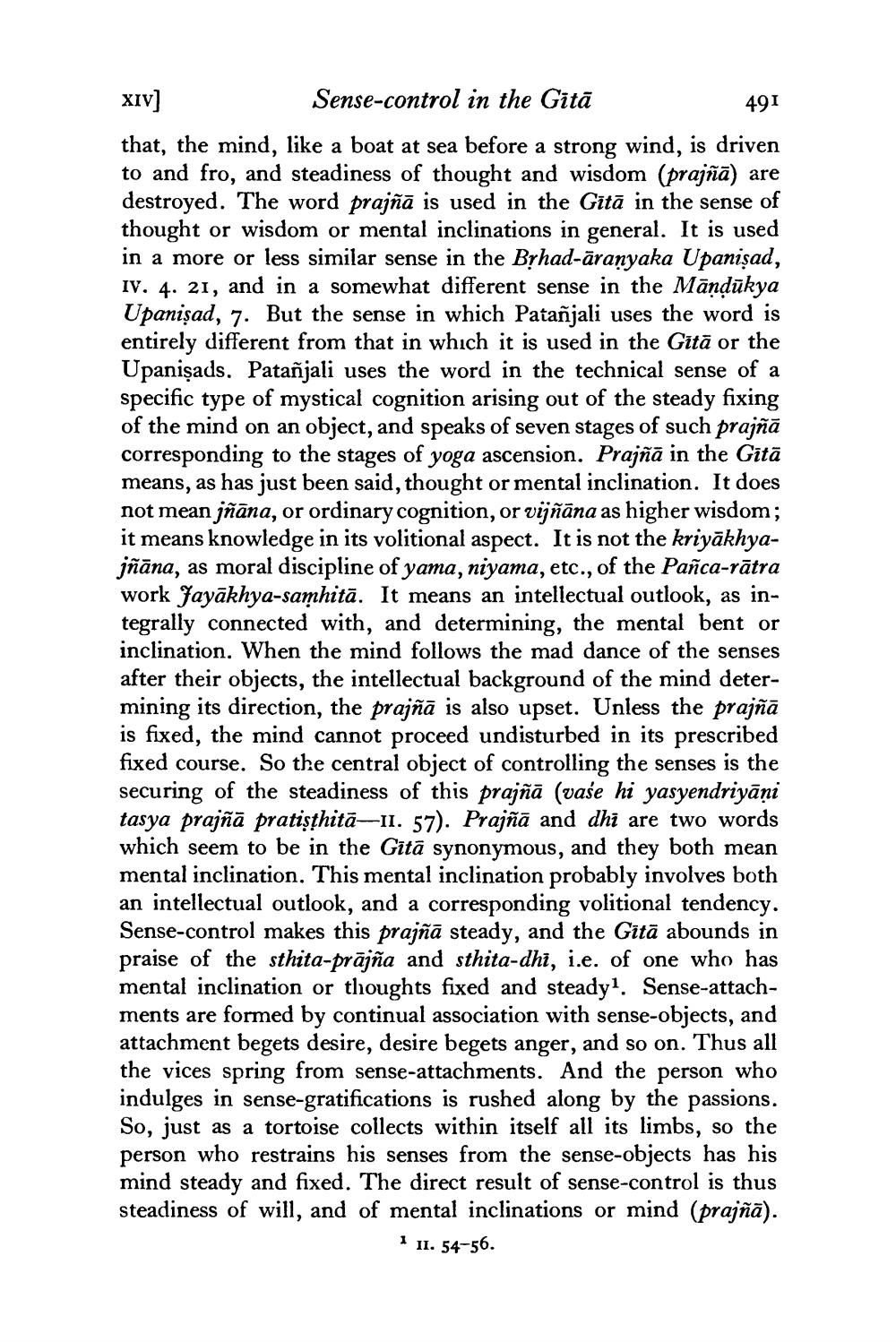________________
XIV]
Sense-control in the Gītā
491
that, the mind, like a boat at sea before a strong wind, is driven to and fro, and steadiness of thought and wisdom (prajñā) are destroyed. The word prajñā is used in the Gītā in the sense of thought or wisdom or mental inclinations in general. It is used in a more or less similar sense in the Brhad-āranyaka Upanisad, iv. 4. 21, and in a somewhat different sense in the Māndūkya Upanişad, 7. But the sense in which Patañjali uses the word is entirely different from that in which it is used in the Gitā or the Upanişads. Patañjali uses the word in the technical sense of a specific type of mystical cognition arising out of the steady fixing of the mind on an object, and speaks of seven stages of such prajñā corresponding to the stages of yoga ascension. Prajñā in the Gītā means, as has just been said, thought or mental inclination. It does not mean jñāna, or ordinary cognition, or vijñāna as higher wisdom; it means knowledge in its volitional aspect. It is not the kriyākhyajñāna, as moral discipline of yama, niyama, etc., of the Pañca-rātra work Jayākhya-samhitā. It means an intellectual outlook, as integrally connected with, and determining, the mental bent or inclination. When the mind follows the mad dance of the senses after their objects, the intellectual background of the mind determining its direction, the prajñā is also upset. Unless the prajñā is fixed, the mind cannot proceed undisturbed in its prescribed fixed course. So the central object of controlling the senses is the securing of the steadiness of this prajñā (vaše hi yasyendriyāņi tasya prajñā pratișthitā—11. 57). Prajñā and dhi are two words which seem to be in the Gitā synonymous, and they both mean mental inclination. This mental inclination probably involves both an intellectual outlook, and a corresponding volitional tendency. Sense-control makes this prajñā steady, and the Gītā abounds in praise of the sthita-prājña and sthita-dhi, i.e. of one who has mental inclination or thoughts fixed and steadyl. Sense-attachments are formed by continual association with sense-objects, and attachment begets desire, desire begets anger, and so on. Thus all the vices spring from sense-attachments. And the person who indulges in sense-gratifications is rushed along by the passions. So, just as a tortoise collects within itself all its limbs, so the person who restrains his senses from the sense-objects has his mind steady and fixed. The direct result of sense-control is thus steadiness of will, and of mental inclinations or mind (prajñā).
1 11. 54-56.




